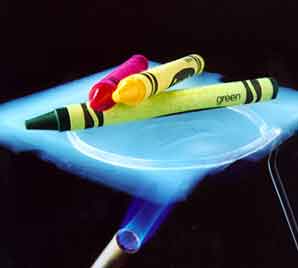Essential Electrical Wiring and Fitting Tips for Home Improvement
In the realm of home improvement projects, few tasks are as crucial and potentially hazardous as electrical wiring and fitting. Whether you’re renovating your current home or moving into a new one, understanding the basics of electrical work is essential for safety and functionality. Here are some key tips to consider before embarking on any electrical project in your home.
Plan Thoroughly
Before diving into any electrical work, take the time to plan out your project meticulously. Map out where you want outlets, switches, and fixtures to be placed. Consider the electrical requirements of appliances and devices you’ll be using in each area. Planning ahead can prevent costly mistakes and ensure your electrical system meets your needs.
Know the Code
Familiarize yourself with local building regulations and codes regarding electrical work. Codes are in place to ensure safety and compliance with standards. Ignoring or overlooking these codes can result in dangerous electrical hazards and may lead to legal issues when selling your home. If in doubt, consult with a licensed electrician to ensure your project meets all requirements.
Use the Right Tools and Materials
Quality tools and materials are essential for a successful electrical project. Invest in reliable wire strippers, pliers, screwdrivers, and voltage testers to ensure safe and efficient work. Choose high-quality wires, outlets, switches, and fixtures from reputable manufacturers. Using subpar materials can lead to poor performance, electrical failures, and safety hazards down the line. For all your electrical supply needs, consider sourcing from reputable wholesale suppliers like powerpointelectrics.co.uk, ensuring quality products and expert guidance for your home improvement projects.
Turn Off Power
Before beginning any electrical work, always turn off the power to the area where you’ll be working. Locate the circuit breaker or fuse box and switch off the appropriate circuit. Use a voltage tester to confirm that the power is off before touching any wires or devices. Working on live electric circuits is extremely dangerous and should be avoided at all costs.
Label Wires and Cables
Properly labeling wires and cables during installation can save you time and frustration later on. Use colored tape or labels to identify each wire’s function, such as hot, neutral, and ground. This will simplify troubleshooting and future modifications, especially in complex electrical systems.
Maintain Proper Wiring Techniques
Follow standard wiring practices to ensure a safe and reliable electrical system. Strip wire insulation carefully, making sure not to nick or damage the conductors. Use wire nuts or terminal blocks to securely connect wires together. Avoid overloading circuits by distributing loads evenly and installing additional circuits when necessary.
Protect Wires and Cables
Properly route and protect wires and cables to prevent damage and minimize fire hazards. Avoid running wires through walls or ceilings without proper conduit or cable protection. Use cable staples or straps to secure wires to framing members and avoid pinching or crushing them. Install protective plates over wires that pass through studs or joists to prevent accidental damage from nails or screws.
Test and Inspect
Once your electrical wiring and fittings are installed, thoroughly test and inspect the system before closing up walls or ceilings. Check outlets, switches, and fixtures for proper operation. Use a multimeter to measure the voltage and ensure circuits are functioning as intended. Conduct a visual inspection of all wiring connections to identify any potential issues or defects.
Seek Professional Help When Needed
While many electrical projects can be DIY-friendly, some tasks are best left to the professionals. If you’re unsure about any aspect of your electrical project or if it involves complex wiring or installations, don’t hesitate to consult with a licensed electrician. It’s better to invest in professional help upfront than to risk safety hazards or costly repairs later on.
By following these tips and guidelines, you can tackle electrical wiring and fitting projects in your home with confidence and peace of mind. Remember, safety should always be your top priority when working with electricity. When in doubt, seek certified professional assistance to ensure the job is done safely and correctly. With proper planning, tools, and techniques, you can create a safe and efficient electrical system that meets your home improvement needs for years to come.





